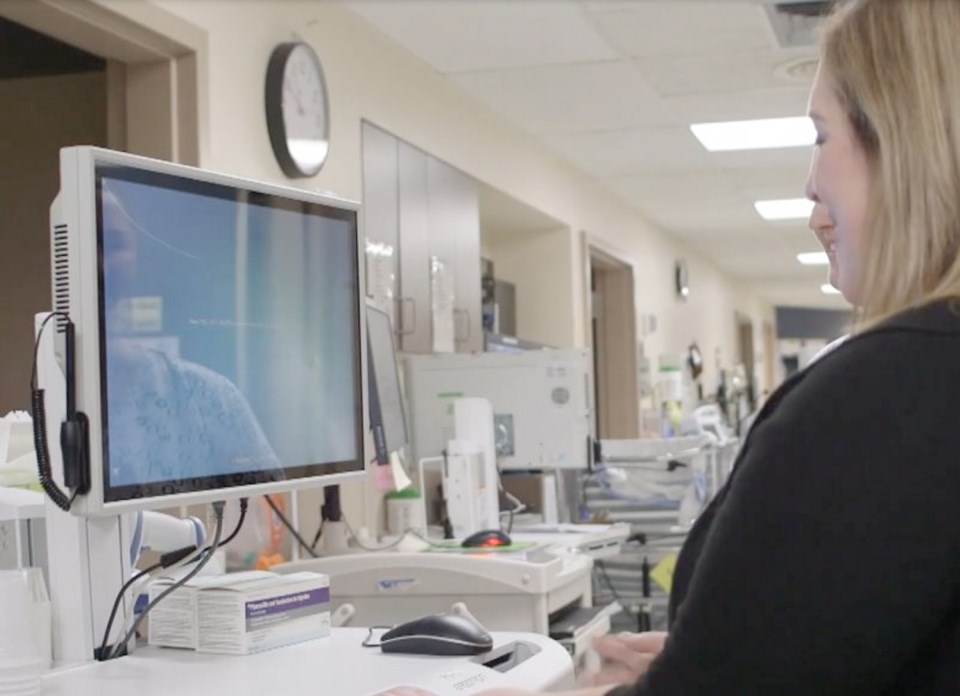An independent investigation has found the IHealth project in Nanaimo is severely overbudget, has been badly mismanaged by Island Health and should not be rolled out across Vancouver Island until problems are fixed.
It does not recommend pulling the plug on the project. Instead, Health Minister Adrian Dix said he will appoint a mediator to help it move forward.
The Ernst and Young report, commissioned by Dix, followed protests by some doctors at Nanaimo Regional General Hospital who were concerned the electronic health system put patient safety at risk.
Doctors said the system has resulted in drug dosage errors and other concerns since its introduction as a pilot project at the hospital in March 2016.
“I would describe the review as highly critical, even quite devastating, of how the system was implemented here in Nanaimo and has been implemented on Vancouver Island,” Dix said.
It will cost at least $54.1 million, on top of its initial $173.5-million budget, to complete the project.
“It’s significantly over budget,” Dix said. “Worse than that, of the initial budget, $20 million was completely unfunded.”
The report found IHealth was not properly planned or implemented. Some issues could have been prevented if Island Health had heeded advice from other Canadian health jurisdictions.
IHealth was put in place before the hospital was prepared. Local staff weren’t adequately engaged, consulted or trained to use the system. And a climate of distrust at the hospital, with “deeply polarized” stakeholders, made things worse.
Although patient safety has been the primary concern raised by staff, the report found only three of 28 “critical” patient-safety events reported since March 2016 were related to the computer system. An expert panel found that some patient-safety events are expected, but that improvements in safety relative to paper systems tend to outweigh any new safety risks introduced.
However, the report criticizes Island Health’s investigation of safety concerns and the process for reporting their resolution.
Dix said he would accept and implement nine recommendations from Ernst and Young.
The recommendations include fully investigating safety concerns, reviewing the governance structure for IHealth and Island Health more broadly, ensuring readiness and training before future activations, and developing a realistic financial forecast and funding model.
Dix said he would appoint a mediator — under whom Island Health will be treated on equal footing with other stakeholders, instead of taking a leadership role, he said. Deputy health minister Stephen Brown will act as “tie breaker” on any disputes.
Although the report found less than half of staff and physicians surveyed agreed it would be possible to work collaboratively to make IHealth a success, Dix said it’s necessary to move foward with the software.
Island Health already uses a software system by Cerner, the company that developed IHealth, at facilities across Vancouver Island, he said. And the money already spent on the project is significant.
“We have to continue with the IHealth project, but we have to change the way we do business here in Nanaimo,” he said.
Dr. David Forrest, president of the Nanaimo Medical Staff Association, said he was relieved to see the report validate healthcare workers’ concerns. It confirmed that it wasn’t only a small group of physicians, but the majority of healthcare workers who were concerned about the technology. It also showed those feelings haven’t changed since a 2016 independent report by Dr. Doug Cochrane, who identified potential for errors, decreased productivity and other problems with the system.
“It’s striking that 22 months after IHealth was launched, a majority of staff still feel it would be safer to use paper than this system,” Forrest said.
Forrest said he’s optimistic about the mediation process and the promise of involving healthcare workers whose voices weren’t previously heard.
“I think that is fundamental to making better healthcare decisions, but also, in addressing the other big elephant in the room, which is the toxic culture,” Forrest said.
But he said he’s still not clear on how the mediation process will address fundamental concerns about the software.
Island Health interim president and CEO Kathy MacNeil said the health authority accepts the report findings and recommendations.
“The review is clear that the system is not at the stage of implementation it should be, and it identifies areas where Island Health did not live up to our commitments — commitments to staff and physicians and, most importantly, commitments to our patients and their families,” MacNeil said in a statement.
She said the fault does not lie with one person, but with the whole health authority.
“Island Health is also committed to working collaboratively with stakeholders to address the other recommendations contained in the report. This includes moving forward with IHealth activations across other acute care sites, but only after we have stabilized the system” at Nanaimo Regional General Hospital.
Island Health confirmed that Suzanne Fox, who was executive director for the geographic region that included the hospital, has left the health authority.
It would not comment on the reason for the departure, but said it will be recruiting to fill the position.
The executive director job previously included oversight of IHealth, however those duties were assigned to a different position several months ago.



